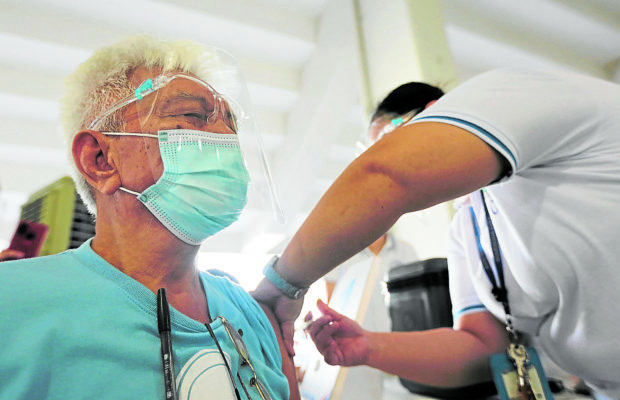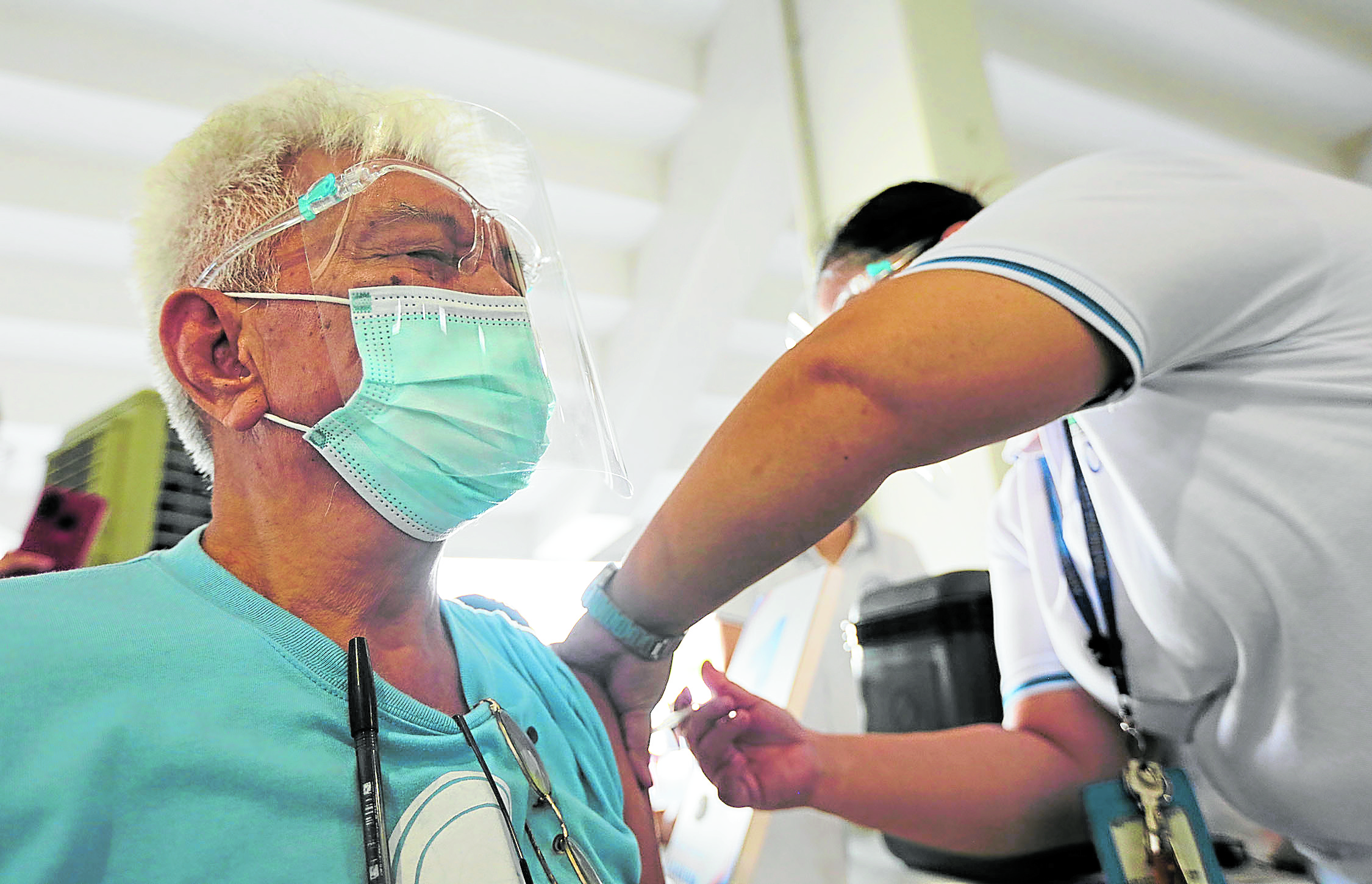
(Second of a series)
Although local experts and health officials say they’re not aware of any indication of the Delta variant of COVID-19, it does not mean that there’s really no transmission. We can be blissfully unaware of its presence, but unless we’re doing sufficient genomic sequencing surveillance, we can’t be that confident.
We appreciate their desire to not alarm the public, but preparing for a serious threat such as a Delta variant surge requires some mindset preparation by various government agencies, local governments and the public. The sooner we prepare to mitigate its impact on the country, the better prepared we will be.
If our mental conditioning is that we’ll probably succeed in preventing community transmission, we’ll likely be caught off-guard again, just like during the recent second surge.
Our experts also assured us that the new variants—United Kingdom and South African—consisted of only a small fraction of the cases here, and with the vaccination program already initiated, they should not be cause for alarm.
Less than two months later, the Department of Health (DOH) reported that the variants of concern were already the dominant strains here and, soon after, we had the big surge that saw hapless COVID patients dying in hospital driveways or parking lots, waiting for a slot in the emergency room.
Hedging our bets
We have to set our minds that the Delta variant is going to be the cause of the next big surge in our country, but with preparation, we can mitigate its consequences and make it come and go, until the next more potent variant, perhaps the Delta Plus, pushes it out of circulation, and so with every new variant that emerges.
Unfortunately, adequate preparation rests mainly in the hands of our health officials and policy makers, not of ordinary citizens, although we have our responsibilities to fulfill. If our policy makers stubbornly stick to a vaccine-centric strategy, we’ll likely just end up with a repetitive cycle of surges and periods of stability until the truly big surge of a viral monster with great infectiousness, killing power and stronger capability to evade the vaccines comes along.
No worries, that’s still a few mutations away. Hopefully, our DOH and IATF (Inter-Agency Task Force for the Management of Emerging Infectious Diseases) may finally reconsider shifting from a vaccine-centric approach to a multipronged strategy so we could hedge our bets to win this pandemic war. (See past columns: “Multipronged approach vs vaccine-centric strategy,” April 13; “Six urgent steps that may help turn health crisis around,” March 22; “My rejoinder on vaccination and ivermectin,” March 30.)
Achilles’ heel
In a commentary last March, we predicted that our vaccines will likely be no longer effective by September this year. It looks like the Delta Plus variant will be the Achilles’ heel of all currently available vaccines, but we’ll worry about that later this year. Our hands will be full with the Delta variant in the next three to four months.
In addition to genomic sequencing of viruses isolated from actual patients, wastewater surveillance for the presence of new variants, particularly in densely populated communities, can also help public health officials detect the extent of COVID-19 infections in communities. This does not have to be done in all barangays, only in selected densely populated ones.
Public education is also needed on the changing symptomatology or clinical presentation of the Delta variant, so prompt isolation and early treatment could be done.
As I wrote in my Facebook post two weeks ago: “The clinical presentation of the Delta variant is tricky. Fever and cough are no longer the dominant symptoms as in the original wild-type variant. Headache, sore throat, colds or runny nose are now the prominent symptoms. If you have these, think COVID and start treatment, isolate yourself, protect those who have been exposed to you, especially the vulnerable like the elderly and the immunocompromised.”
The case of India
In India, treatment was delayed because many with the atypical symptoms didn’t think it was COVID, especially if there was no fever, cough or loss of smell and taste. Only a minority of cases with the Delta variant still present with the previous classical symptoms. The majority present initially with headache, sore throat and runny nose (colds). In a few days, this can rapidly deteriorate into severe respiratory failure, especially in the elderly.
Over the last two months, I have personally treated and am still treating more than 10 COVID cases through Viber, presenting with these symptoms
—without fever and cough. I suspect they might already be Delta-variant cases but remain undetected. I suspect there might be hundreds, perhaps a few thousands of these cases already in our country, particularly in the provinces where the current surges are being experienced.
Early diagnosis and treatment are essential. The key is to have a high index of suspicion, isolate promptly, contact trace, and protect with chemoprophylaxis the exposed persons in the household or office, particularly the elderly and other vulnerable individuals. The Delta variant is notorious for infecting the entire household.
60% more transmissible
The Delta variant is 60 percent more transmissible than the already highly transmissible UK or South African variants. It requires more hospitalization, and is possibly more deadly if not treated early, as shown by the Indian experience. Hence, their death rates have not significantly gone down because, although the cases have decreased by 85 percent, people in the poor rural areas are still not getting the early treatment they need.
We must aim to vaccinate 100 percent of the elderly and vulnerable (around 20 million-22 million Filipinos) with Pfizer, Moderna and AstraZeneca. As of last week, less than 15 percent of these vulnerable sectors have been fully vaccinated, and mostly with Sinovac, which does not seem to be effective with the Delta variant, as shown by the Indonesian, Chilean and several other countries’ experiences.
The good news is that although we may have a third surge of new cases with the Delta variant, we can reduce deaths even lower than our current death rate of more than 100 per day, since the three vaccines have been shown to protect well the elderly and vulnerable sectors. The daily deaths are mainly coming from these sectors.
‘Herd protection’
If I were President Duterte, I’d ask Health Secretary Francisco Duque III and Secretary Carlito Galvez Jr. each week during their meeting how many elderly and vulnerable citizens they have vaccinated, not the low-risk sectors which are sometimes now being accommodated in walk-in vaccination sectors due to a low turnout of vaccinees.
There should be a massive effort to convince the vulnerable sectors who have a high risk of dying should they get infected with COVID, not the low-risk ones who have a one in 300,000 risk of dying from the disease. Only a small percentage of this vulnerable population has been vaccinated so far.
Next week, we’ll discuss why the much-desired “herd immunity” is a comforting aspiration to look forward to but, sadly, it’s no longer attainable with vaccination due to fast-evolving variants, as has been shown by the United Kingdom and Israel experiences now. Instead, we should aim for “herd protection,” which can just as effectively—if not more effectively—bail us out of this pandemic in six months or less. INQ(To be concluded)









































